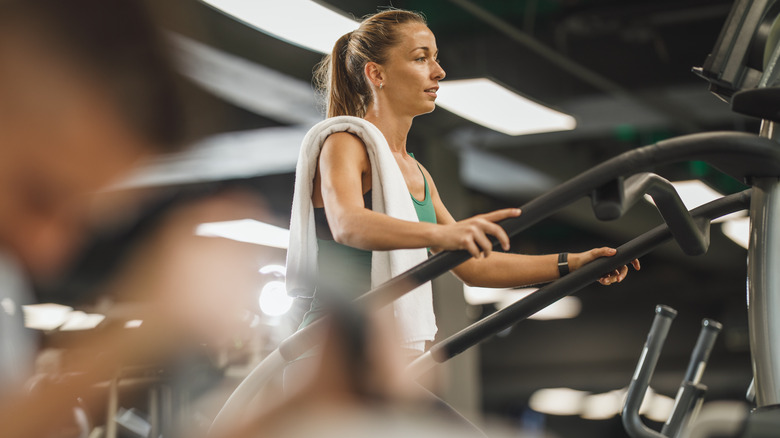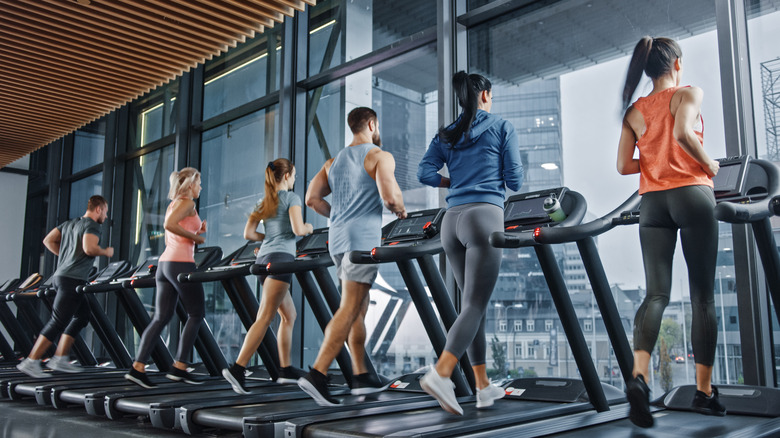StairMaster Vs. Treadmill: Which One Should You Choose?
StairMasters and treadmills are two of the most popular machines you can find in almost any gym. And for good reason: Both help tone your body while delivering cardiovascular conditioning. Both require the use of your legs, but they put different kinds of stress on your body.
As the name suggests, StairMasters mimic the movement of walking up stairs. If you have ever climbed a set of stairs, you know that it is a serious workout. Because of the stepping-up motion, you will develop your glutes, quadriceps, hamstrings, and calves (via Healthline).
That stepping action is what can make StairMasters tough on the body, namely the knees and hips. Walking up stairs puts a strain on the knee and can aggravate certain conditions such as arthritis or chondromalacia patella, which is damaged cartilage under the kneecap (via Healthline). If you suffer from hip bursitis, using stairs as your cardio workout might do more harm than good (via Livestrong). So, should you conclude treadmills are better for you? It really depends on your particular needs.
Treadmills benefit runners, walkers, and those with joint issues
Treadmills are more versatile than StairMasters because you can walk, jog, and run on one machine. They are ideal for people just starting out on their fitness journey or for those who have been exercising for years. If you are a runner, a treadmill provides you the opportunity to work out indoors when running outside is not an option. It also allows you to control your speed and pacing, which can help you prepare for a race or marathon (via NBC News).
Because you can walk on treadmills, they're safer if you have knee and hip issues. Brisk walking is aerobic, and you can slowly increase the incline to make your workout more challenging. However, walking may not burn as many calories as running or using a StairMaster. Nevertheless, you are still giving your muscles a decent workout. Just like other aerobic exercises, walking helps strengthen bones and muscles and you can help reduce your risk for diseases such as high blood pressure and diabetes (via Mayo Clinic).


